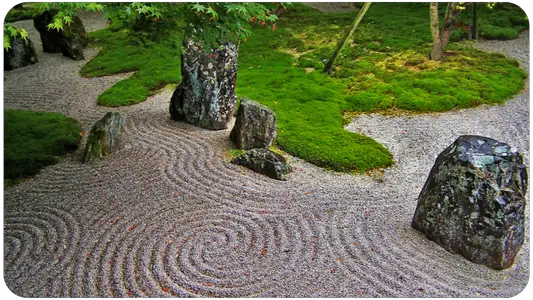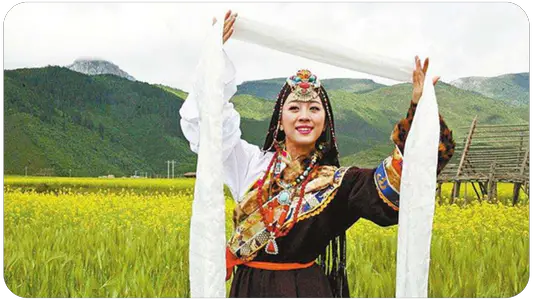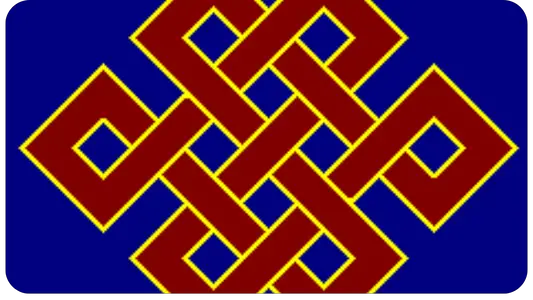Akasagarbha - Sanskrit name; Chinese Xu Kong Zang (虛空藏); Japanese Kokuzo (虚空蔵?), also Akasha; Tibetan Namkhai - is one of the eight great bodhisattvas of Vajrayāna Buddhism, and one of the thirteen buddhas of the Japanese Shingon tantric school.
Name
The name is composed of akasa, "limitless space," and garbha, "repository"; it is interpreted as "repository from limitless space" or, in Chinese translation, "repository of vacuity." Vacuity in this case is the true nature of reality (śunyātā) the source and repository of all wisdom and all virtues.
The Great Assembly Sutra - Mahasanghata sutra, in Japanese Daishukyo (大集經?), in Chinese Dajijing (大集經T) - compares Akasagarbha to a rich man who opens his treasure to others without qualms; indeed, the bodhisattva is known to distribute compassion and wisdom without limit.
The term akasa can also mean "heavenly space," as opposed to ksiti, "earth"; this interpretation has suggested the establishment of an Akasagarbha/Kṣitigarbha dyad, which experienced a brief diffusion during the introduction of Buddhism in Japan.
Another name by which he was known was Gaganagarbha (also Khagarba), in Chinese Xukongyun (虛空孕T), in Japanese Kokuyo (虛空孕?).
Origin and cult
It is of ethereal substance, and in maṇḍala belongs to the ratna (jewel) family. According to the Akasagarbha Sutra - Sanskrit Akasagarbha-bodhisattva sutra; Chinese Xukongzang jing (虛空藏經T);
Japanese Kokuzo Bosatsu Kyo (虛空藏經T) - one prays to it facing east at the time of sunrise; elsewhere it is said that the moon, sun and stars are its manifestations. Taking into account that part of his name may have the meaning of "sky," some[1] propose a celestial or stellar deity at the origin of the bodhisattva.
He is associated with a ritual to improve memory-Chinese qiuwenchifa (求聞持法T), Japanese gumonjiho or gubunjiho-described in the sutra bearing his name, introduced in Japan during the Nara period (645-794).
Even to this day, many people recite its mantra in the hope of obtaining an infallible memory. On the island of Honshū, children on turning 13 pay homage to Kokuzo to ask for an increase in their intellectual abilities. Akasagarbha is also prayed to for manual skill;
he is considered the patron saint of artisans. In addition to utilitarian aspects, Kokuzo's mantra also has a spiritual effect; it is recited to obtain goodness and wisdom. Kūkai (Kobo Daishi), founder of the Japanese Shingon school of Buddhism, is one of the people said to have benefited from Akasagarbha's favor by chanting the mantra of which had increased his wisdom and memory.
Also, on the list of the Thirteen Buddhas of the Shingon current, Akasagarbha closes the cycle of funeral rituals by presiding over the thirty-two-year commemoration ceremony since his death.
Kokuzo is also prominent in the Nichiren current of Buddhism; the Seicho-ji (Kiyosumi-dera) temple, where the current's founder studied, was built around a statue of him. According to the Gosho, a collection of his writings, Nichiren saw Kokuzo appear before him one day and then take the form of an elderly monk who gave him the gift of the pearl of wisdom.
Iconography
Akasagarbha is one of the first bodhisattvas introduced to Japan, and his representations there are numerous. He is generally depicted seated, holding a pearl in his left hand and a sword in his right, or with it he forms the mudrā of fearlessness, or more rarely that of giving.
Like Mañjuśrī's, his sword represents wisdom that defeats ignorance; it may be accompanied or replaced by a flower surmounted by the "wish-fulfilling jewel."
There are representations of a group of five Akasagarbha, who are his five emanations: they represent his five types of wisdom and are ordered as the Five Dhyani Buddhas. A particularly important example is the one in Tokyo's To-ji Temple, imported from China in the 9th century.





